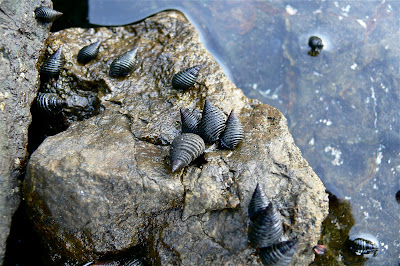 Hotels in Tamarindo have open air lobbies, and the Capitan Suizo Resort invites raccoons into its lobby by putting food out for them on their balcony. The raccoons like to lounge around the lobby, like house cats, lying on the cool tile.
Hotels in Tamarindo have open air lobbies, and the Capitan Suizo Resort invites raccoons into its lobby by putting food out for them on their balcony. The raccoons like to lounge around the lobby, like house cats, lying on the cool tile.When we walk to dinner from our condo in Playa Langosta, we often see raccoons walking along beside the road, heading towards the Capitan Suizo Resort for dinner.
Yesterday several people left comments because I posted a golf photo on the same day that my wife posted a photo of a golf course on her Scottsdale (Arizona) Daily Photos site. They understandably wondered whether we coordinated our photos to post photos of similar subjects on the same day.
Julie and I do not discuss in advance the photos that we post on our sites, except for the monthly Daily Photo theme days about which we sometimes seek each other's opinion. We do not know which photos we have chosen to post until we wake up in the morning and check each other's site.
Sometimes, like the series of photos Julie is now posting on the Phoenecian Resort, I am familiar with her photos because I was with her when she took them. Many times, however, we post photos that we have not shown to each other so that the first time that we see the photos is on the website, just like the readers of our sites.
That may sound strange, but Julie has not been able to go with me the last three times I have gone down to Costa Rica, so I have a lot of photos she has not seen. And I do not have the patience to wait and watch her take macro photos of cactus flowers, as she will set up her tripod, and make lots of adjustments. I figure if the photo turns out well, I will see it when she posts it on her website.
Our photos posted on our Viva la Voyage travel photo site this week are some underwater close-up photos that I took of the inside of iridescent clams in Aitutaki, in the Cook Islands of the South Pacific. If you have not seen them, I respectfully submit that it is worth a visit, as they are unique.































